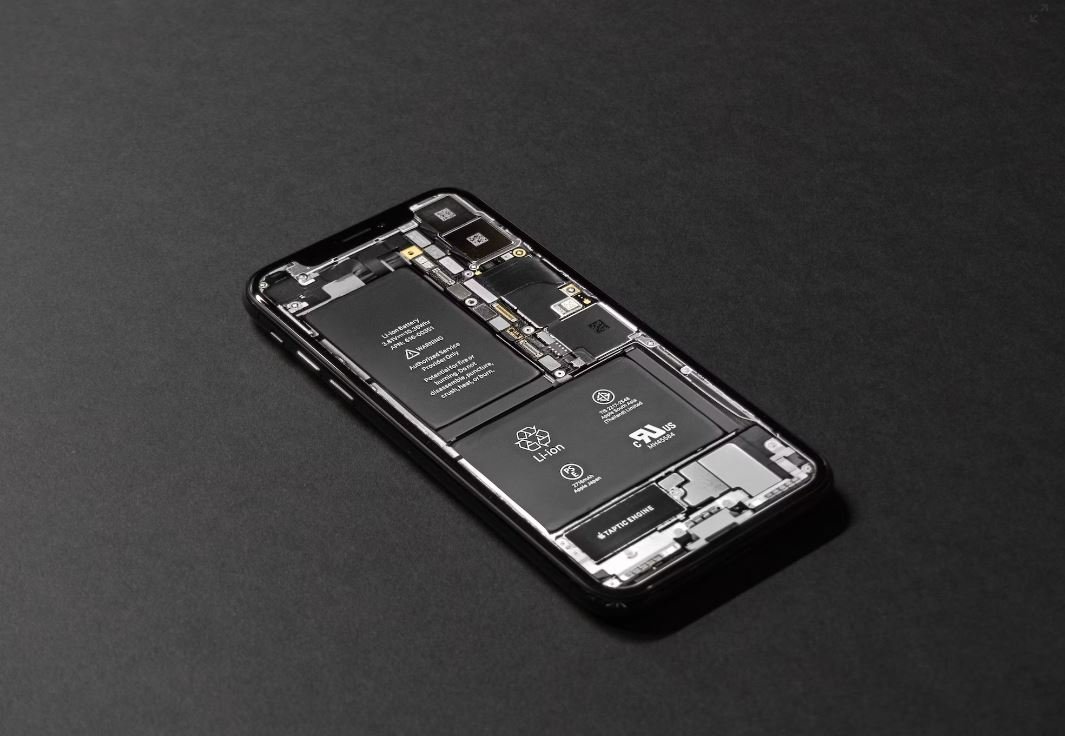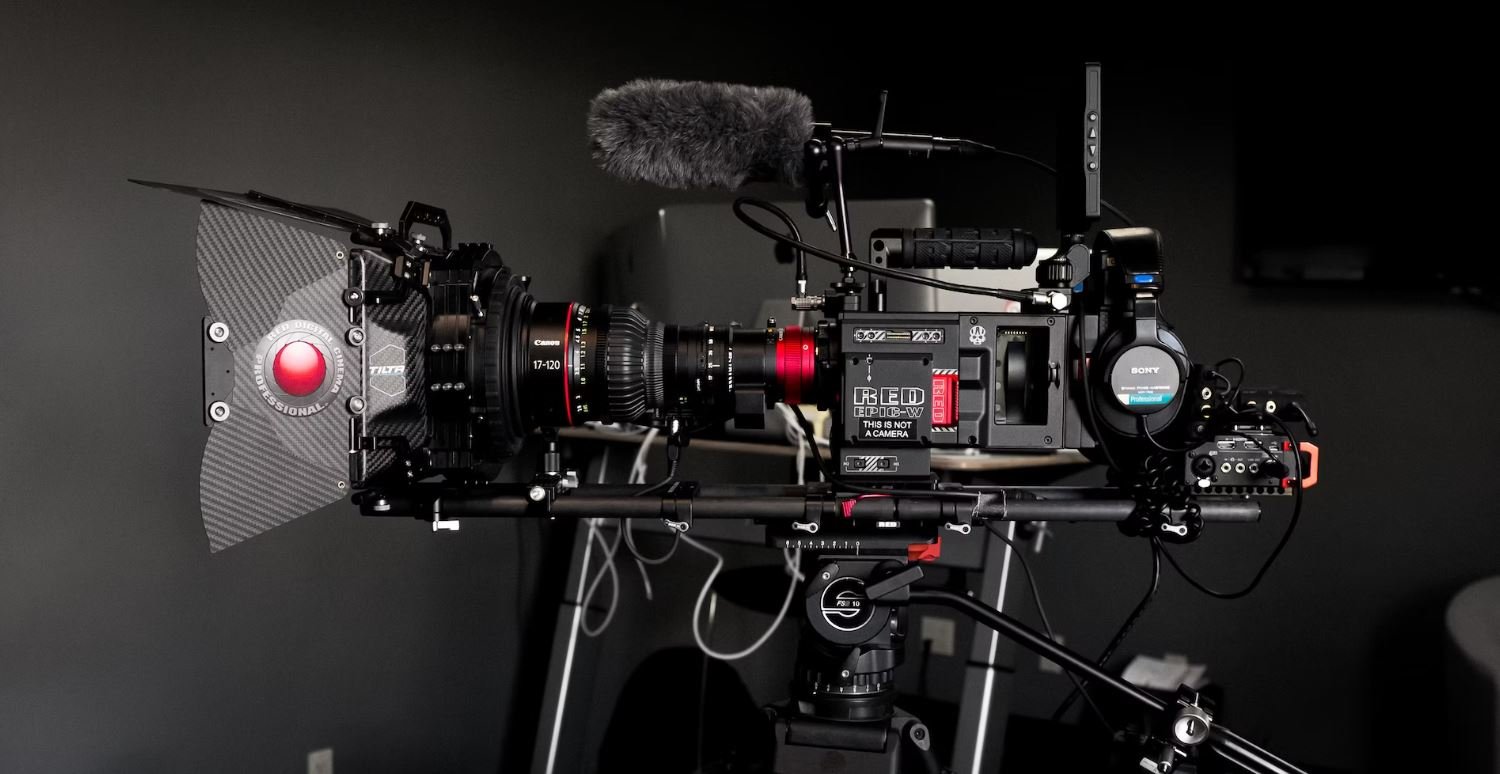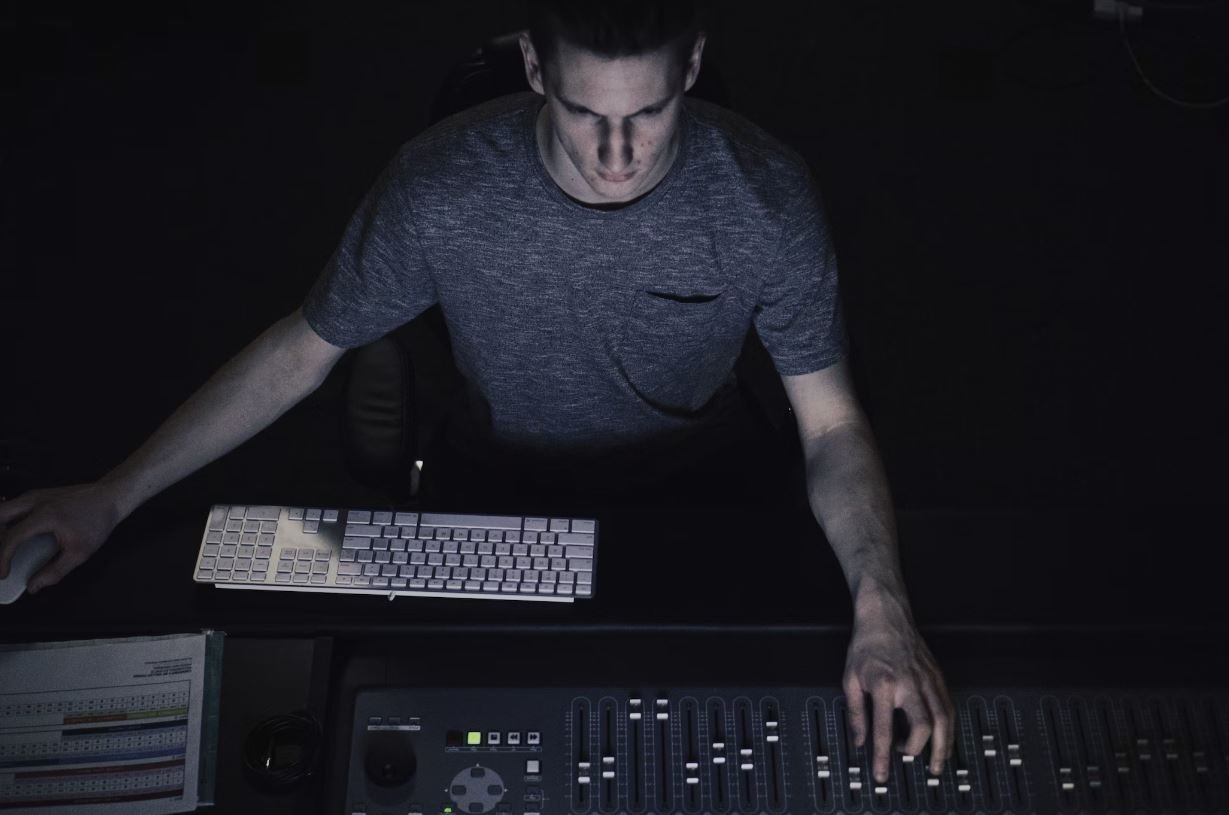Podcast Room
Podcasting has become an increasingly popular medium for people to share their thoughts, ideas, and stories. To ensure high-quality audio recordings, podcasters often invest in a dedicated space called a podcast room. In this article, we will explore the key elements of a podcast room and why it is essential for podcast production.
Key Takeaways:
- A podcast room is a dedicated space designed for recording high-quality audio for podcasts.
- Proper soundproofing, acoustics, and equipment are necessary for professional podcast recordings.
- Setting up a podcast room requires careful planning and consideration of space and budget.
- Having a well-designed podcast room can greatly enhance the overall podcast production process.
Soundproofing and Acoustics
One of the most crucial aspects of a podcast room is soundproofing. **Soundproofing** helps to eliminate any external noise that may interfere with the recording. Additionally, proper **acoustic treatment** ensures clear audio by minimizing echo and reverberation. Installing **sound-absorbing materials** such as acoustic panels or foam is the key to achieving optimal sound quality within a podcast room.
Equipment and Setup
Equipping a podcast room with the right gear is vital to producing professional-quality recordings. Here are some essential equipment and their functionalities:
- Microphones: Choose microphones suited for podcasting, such as condenser or dynamic microphones.
- Mixer/Interface: Allows control over audio inputs, balance, and connection to a computer or recording device.
- Headphones: Provide real-time monitoring of the audio being recorded.
- Pop Filter: Reduces plosive sounds caused by the fast-moving air hitting the microphone.
- Boom Arm: Holds the microphone in place, providing ease of movement and adjustments.
*Investing in good-quality equipment can significantly improve the overall sound quality of your podcast recordings.
Setting Up Your Podcast Room
When setting up a podcast room, consider the following factors:
- Location: Choose a suitable room with minimal external noise and limited echo.
- Size and Layout: Utilize the available space efficiently, ensuring sufficient room for equipment and mobility.
- Furniture and Design: Use functional furniture for comfort and incorporate soundproofing materials into the room’s design.
*A well-organized and aesthetically pleasing podcast room can enhance your episode recording experience.
Podcast Room Tables
| Table 1: Popular Podcast Room Materials | ||
|---|---|---|
| Acoustic Panels | Soundproof Curtains | Bass Traps |
| Diffusers | Foam Tiles | Rug Pads |
In the table above, you can find some popular materials used for podcast room soundproofing and acoustic treatment.
| Table 2: Recommended Microphone Options | ||
|---|---|---|
| Model | Type | Price Range |
| Audio-Technica ATR2100x | Dynamic | $100-$150 |
| Shure SM7B | Dynamic | $300-$400 |
| Rode NT1 | Condenser | $200-$300 |
In Table 2, you can find some popular microphone options suitable for podcasting, along with their recommended price range.
The Benefits of a Dedicated Podcast Room
Having a dedicated podcast room offers numerous advantages:
- Improved Audio Quality: Soundproofing and acoustic treatment minimize external noise and echo, resulting in clearer recordings.
- Better Workflow: A well-designed room with all necessary equipment at hand improves efficiency during podcast production.
- Creating a Professional Image: A dedicated podcast room shows dedication and professionalism to listeners and potential sponsors.
*By creating a dedicated podcast room, you can significantly enhance the quality of your podcast production and overall listener experience.

Common Misconceptions
Podcast Room
Many people have misconceptions about podcast rooms. Let’s debunk some of the common ones:
- Podcast rooms are only for professional podcasters
- Podcast rooms are expensive to set up
- Podcast rooms require a soundproof environment
Despite what some may think, podcast rooms are not only for professional podcasters. In fact, anyone with an interest and passion for a specific topic can create and record their own podcast. It is a platform that allows individuals to express their thoughts and share knowledge with an audience.
- Podcasts offer a creative outlet for individuals of all backgrounds
- No formal training or experience is required to start a podcast
- Podcast rooms offer the opportunity for personal growth and self-expression
Another misconception is that podcast rooms are expensive to set up. While it is true that some professional podcast studios can be costly, there are many affordable options available. With just a basic setup including a microphone, headphones, and a computer, anyone can start recording their podcast from the comfort of their own home.
- Start with a budget-friendly setup and upgrade equipment as needed
- Free or low-cost recording and editing software are widely available
- A simple DIY soundproofing setup can significantly improve audio quality
Contrary to popular belief, podcast rooms do not necessarily require a completely soundproof environment. While soundproofing can definitely enhance the audio quality, it is not a strict requirement. With the right microphone, proper positioning and audio editing techniques, it is possible to create great recordings even in a less-than-perfect acoustic setting.
- Microphone selection and positioning can help minimize background noise
- Editing tools can remove minor audio imperfections
- Alternative options like noise-canceling headphones can be used if soundproofing is not possible

Podcast Room
Podcasting has emerged as a popular medium for individuals and organizations to share their thoughts, ideas, and expertise. With the increasing demand for podcasting facilities, podcast rooms have become a common feature in many establishments. These specialized spaces are designed to provide optimal acoustics, equipment, and amenities for podcast recording and production. In this article, we explore various interesting aspects related to podcast rooms through a series of informative tables.
Top 10 Podcast Topics
Here are the ten most popular podcast topics based on listener engagement and downloads:
| Topic | Genre | Percentage of Total Podcasts |
|---|---|---|
| True Crime | Crime and Mystery | 18% |
| News and Politics | Current Affairs | 15% |
| Comedy | Humor | 12% |
| Health and Wellness | Lifestyle | 10% |
| Technology | Science and Technology | 9% |
| Business and Entrepreneurship | Business | 8% |
| Arts and Culture | Entertainment | 7% |
| Education | Learning | 6% |
| Society and Culture | Personal Journals | 5% |
| Sports | Sport | 4% |
Podcast Episode Length
The length of podcast episodes varies depending on content and audience preferences. This table showcases the distribution of podcast episode lengths:
| Episode Length | Percentage of Episodes |
|---|---|
| Less than 15 minutes | 23% |
| 15-30 minutes | 31% |
| 30-45 minutes | 22% |
| 45 minutes – 1 hour | 16% |
| 1-2 hours | 6% |
| More than 2 hours | 2% |
Podcast Listenership by Age Group
Different age groups exhibit varying preferences when it comes to podcast genres. The following table demonstrates the distribution of podcast listenership by age group:
| Age Group | Percentage of Listeners |
|---|---|
| 18-24 | 15% |
| 25-34 | 35% |
| 35-44 | 28% |
| 45-54 | 12% |
| 55+ | 10% |
Most Followed Podcast Hosts
The podcasting world is home to various influential hosts who have amassed a large following. Here are the top five podcast hosts based on social media followers:
| Podcast Host | Followers (in millions) |
|---|---|
| Joe Rogan | 8.6 |
| Dax Shepard | 5.2 |
| Conan O’Brien | 4.7 |
| Marc Maron | 3.9 |
| Karen Kilgariff and Georgia Hardstark (My Favorite Murder) | 2.8 |
Podcast Ad Revenue
Podcasts have become an attractive channel for advertising, allowing brands to reach engaged audiences. This table presents the podcast ad revenue generated in the last year:
| Year | Podcast Ad Revenue (in billions) |
|---|---|
| 2016 | 0.9 |
| 2017 | 1.7 |
| 2018 | 2.7 |
| 2019 | 4.3 |
| 2020 | 7.5 |
Podcast Listenership by Gender
Podcast listenership is distributed among different genders. The following table illustrates the gender distribution of podcast listeners:
| Gender | Percentage of Listeners |
|---|---|
| Male | 55% |
| Female | 45% |
Podcast Hosting Platforms
Various platforms serve as hosts for podcast creators, ensuring their shows reach a wide audience. The following table showcases the leading podcast hosting platforms:
| Platform | Market Share |
|---|---|
| Spotify | 45% |
| Apple Podcasts | 30% |
| Google Podcasts | 15% |
| SoundCloud | 7% |
| Stitcher | 3% |
Podcast Monetization Methods
Podcasters leverage different methods to monetize their shows and sustain their operations. This table presents the popular podcast monetization methods:
| Method | Percentage of Podcasts |
|---|---|
| Advertising/Sponsorships | 60% |
| Donations/Patronage | 20% |
| Merchandise Sales | 10% |
| Premium/Paid Content | 7% |
| Crowdfunding | 3% |
Podcast Listener Engagement
Podcast hosts aim to engage their listeners by encouraging interactions and feedback. This table highlights the various means of podcast listener engagement:
| Engagement Method | Percentage of Podcasts |
|---|---|
| Social Media | 40% |
| Email/E-newsletters | 25% |
| Live Events/Meetups | 20% |
| Podcast Communities/Forums | 10% |
| Listener Q&A/Call-Ins | 5% |
Conclusion
Podcasting has grown into a captivating and profitable industry, attracting millions of listeners worldwide. As demonstrated by the tables provided, there is a wide range of topics, episode lengths, and audience demographics in the podcasting realm. With the rise of hosting platforms, increased ad revenue, and innovative monetization methods, podcasters have ample opportunities to create and deliver engaging content to their dedicated fan base. The data presented here showcases the dynamic and rich landscape of podcasting, inviting both listeners and creators to participate in this evolving medium.
Frequently Asked Questions
What is a podcast room?
A podcast room is a dedicated space equipped with audio recording equipment and acoustically treated to ensure optimal sound quality. It provides podcasters with an environment where they can comfortably record their shows and have control over the audio production.
What equipment is typically found in a podcast room?
A podcast room usually includes microphones, headphones, audio mixers, preamps, audio interfaces, and recording software. Some podcast rooms may also have soundproofing materials, such as foam panels, to reduce external noise and echoes.
Why do podcasters use dedicated podcast rooms?
Dedicated podcast rooms offer several benefits. First, they provide better sound quality by minimizing external noise and reverberation. Second, they allow for comfortable and uninterrupted recording sessions. Lastly, they offer a controlled environment for audio editing and post-production.
How can I create a podcast room at home?
To create a podcast room at home, you will need to find a quiet space and invest in the necessary equipment, such as microphones and audio interfaces. You should also consider acoustically treating the room by adding sound-absorbing materials to minimize unwanted reflections and improve audio quality.
What are some best practices for recording in a podcast room?
For optimal recording in a podcast room, ensure you have a good microphone technique, maintain a consistent distance from the microphone, and speak directly into it. Avoid wearing noisy clothing, and adjust the room’s lighting to reduce the risk of flickering and distractions.
How do I book a podcast room?
To book a podcast room, check with local recording studios, coworking spaces, or podcast production companies that offer dedicated podcast rooms. Many of them have booking systems available online, allowing you to reserve a room for a specific date and time.
Can I use a podcast room for other audio-related activities?
While podcast rooms are primarily designed for podcasting, they can also be used for other audio-related activities, such as voice-over recordings, narrations, interviews, and audio editing. The quiet and controlled environment makes them suitable for various audio production tasks.
What are the advantages of using a podcast room instead of recording at home?
Using a podcast room provides a more professional and polished sound due to better equipment and acoustics. Additionally, it offers a focused environment free from distractions, ensuring higher-quality recordings. Podcast rooms are also beneficial for networking and collaborating with other podcasters or professionals in the industry.
How much does it cost to use a podcast room?
The cost of using a podcast room varies depending on the location, the equipment provided, and the duration of usage. Some studios or coworking spaces offer hourly rental rates, while others may have monthly membership options. It is advisable to contact specific facilities to inquire about their pricing structure.
Are there any alternatives to using a dedicated podcast room?
Yes, alternatives to using a dedicated podcast room include creating a home studio, using portable recording setups, or converting a quiet room into a makeshift podcast room. These options may require additional investments in equipment and acoustic treatments, but they offer flexibility and convenience.


Leave a Reply